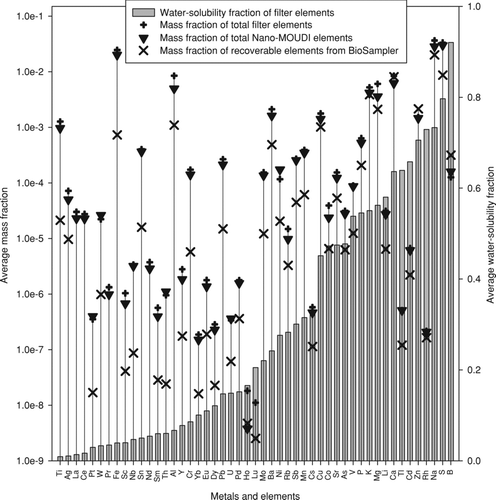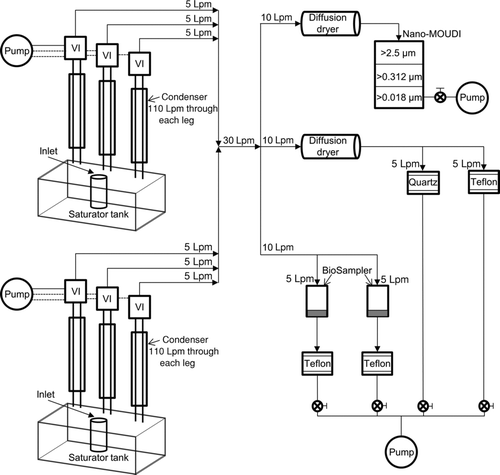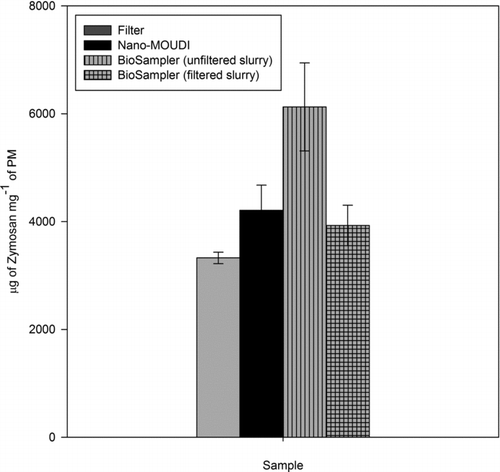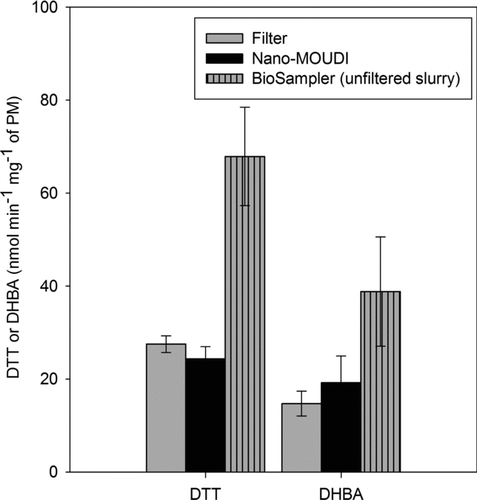Figures & data
FIG. 2 Gravimetric PM2.5 mass concentrations of the filter sample, Nano-MOUDI substrate, and BioSampler slurry (unfiltered). The mass concentration of the BioSampler suspension was determined as the difference in the mass gains of the Teflon filter and the BioSampler “after-filter.”
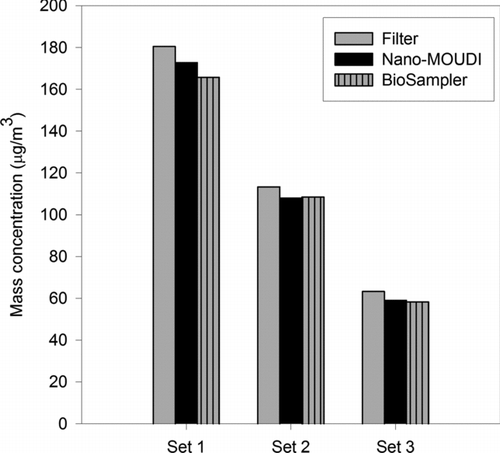
FIG. 3 Average mass fractions of ions in PM2.5 samples from the filter, Nano-MOUDI, and BioSampler (unfiltered slurry). The mass fraction is defined as the mass ratio of a given species to PM2.5. Error bars represent one standard error.
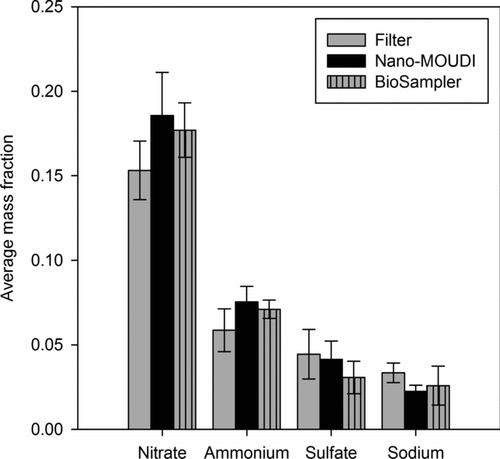
FIG. 4 Average mass fractions of OC and WSOC in PM2.5 samples from the filter, Nano-MOUDI, and BioSampler (unfiltered slurry). Error bars represent one standard error.
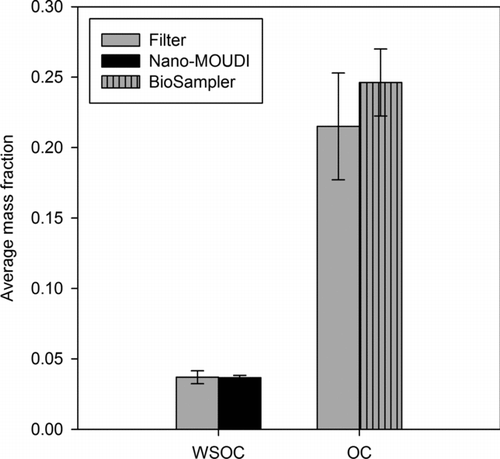
FIG. 5 (a) Linear regression analysis between the average mass fractions of water-soluble elements in PM2.5 samples from the filter and Nano-MOUDI. Standard errors are shown in parentheses. Plot is presented on a log-log scale. (b) Linear regression analyses between the average mass fractions of water-soluble and recoverable elements in PM2.5 samples from the filter–BioSampler (unfiltered slurry) and Nano-MOUDI–BioSampler (unfiltered slurry). Standard errors are shown in parentheses. Plots are presented on a log-log scale.
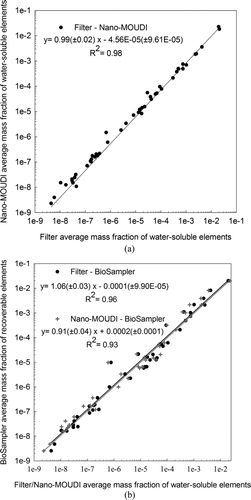
FIG. 6 Average mass fractions of total and recoverable elements in PM2.5 samples from the filter, Nano-MOUDI, and BioSampler (unfiltered slurry; on primary axis in log scale) in addition to the water-solubility fraction of elements as computed from filter measurements (on secondary axis).
